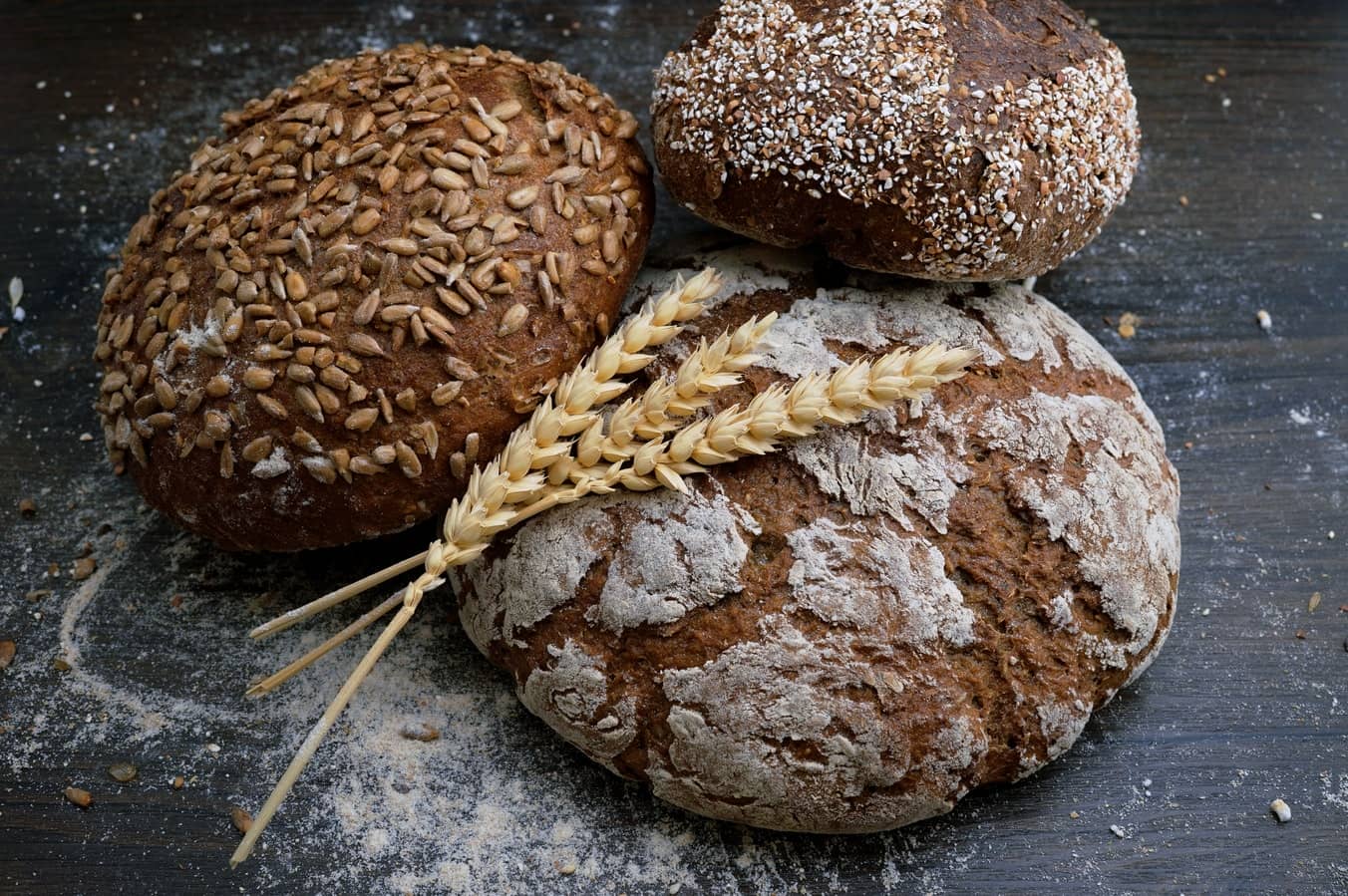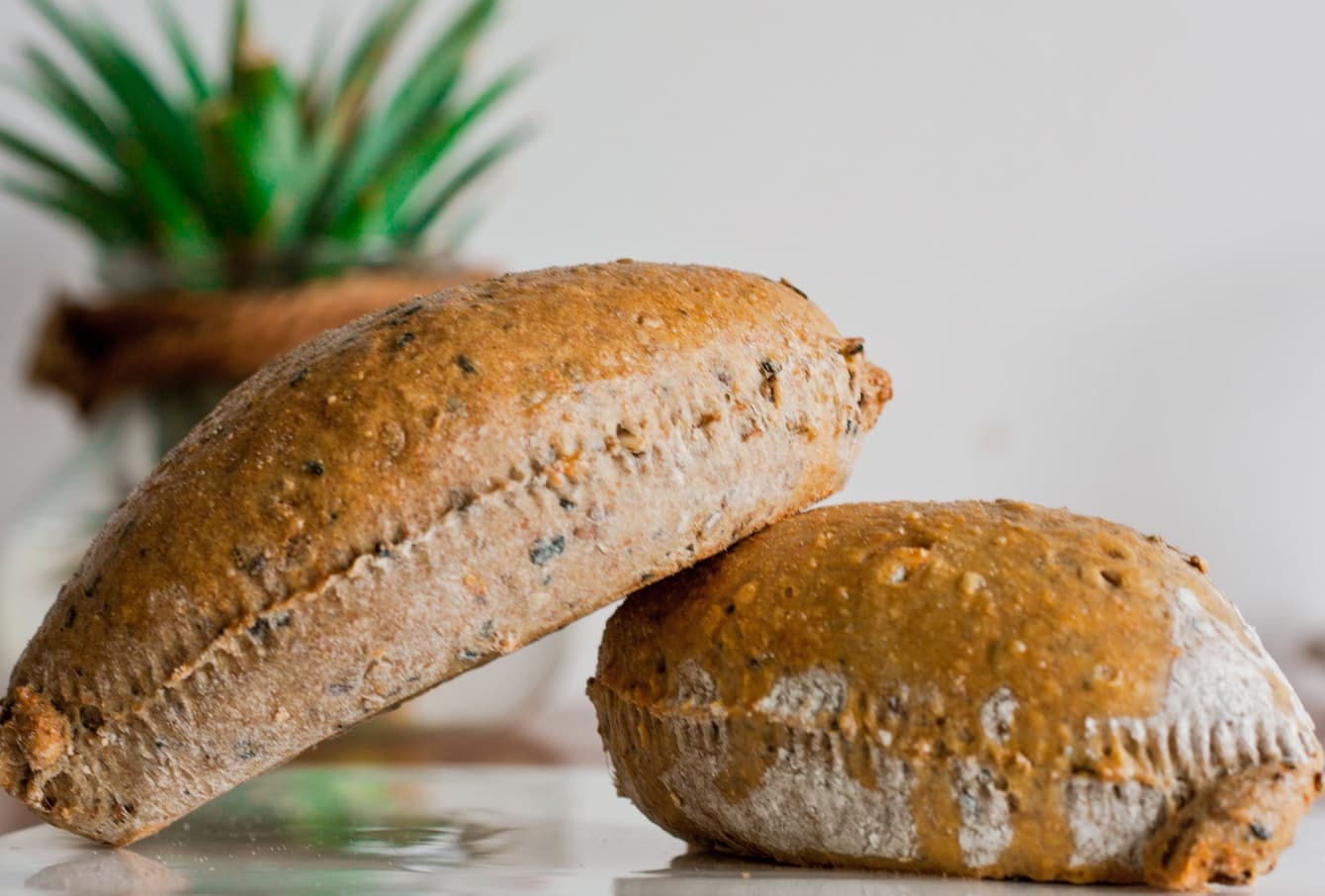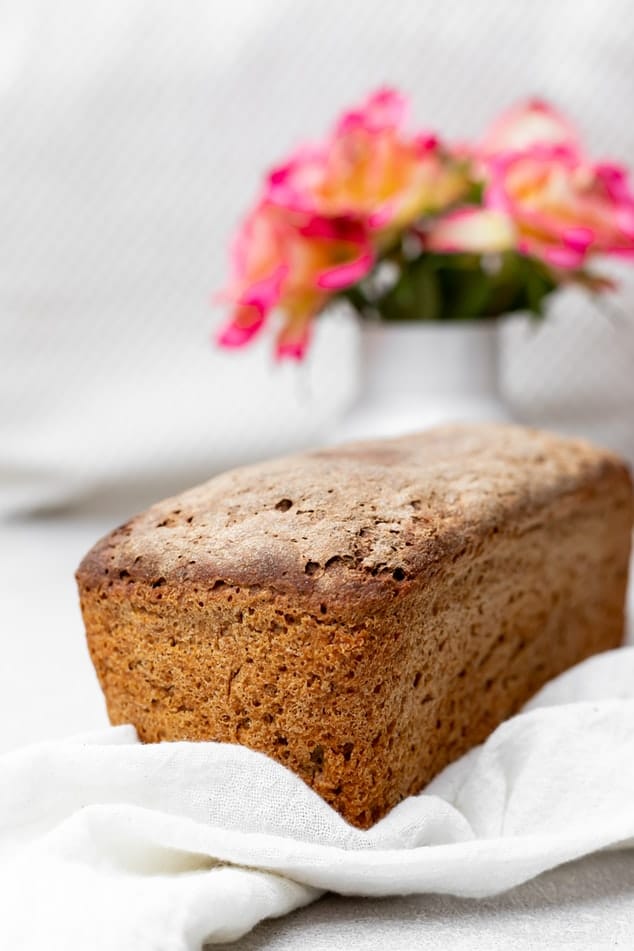All of us know the smell of a freshly-baked loaf of bread, so delightful and warm, this is why it is even stranger when it starts smelling weird. Many people get confused at that point not knowing what to do. Shall the loaf be discarded or not? Should bread be refrigerated to save it from spoilage?
Below we will tell about the reasons bread can smell odd and will try to figure out the best way to keep a loaf fresh longer.
Why Does Bread Smell Odd?
Sometimes the loaf of bread can smell weird and have the scent of alcohol, beer, wine, or sometimes even vinegar! Most of us would get bothered, but in fact, this is quite a natural process. All these scent variations come from the yeast fermentation process, and the odor can be especially strong if the loaf is homemade and used beer as a raising agent.
Why does the smell remind alcohol then? Well, as we just said, the reason can be the beer used for leavening the dough. Also, such a smell appears when the yeast sets in the loaf and transforms the carbs into carbon dioxide and alcohol.
Why does yeast produce this smell, somebody might wonder? Let’s take a closer look at these microorganisms to find the answer.
First of all, what does yeast smell like? The yeast powder or dry yeast typically has almost no scent, but the second it starts working, the significant and pretty strong beer-like odor appears.
Yeast is a type of single-celled microorganisms that belong to the fungus family. They have lots of species and we commonly make use of yeast for bread-making and also producing wine and brewing beer!
When being added to the dough, yeast transforms sugars within the substance producing carbon dioxide and alcohol and working as a leavening agent. Thanks to yeast, the loaf is able to rise and develop an even aroma and proper light and spongy texture.
Sometimes a question arises whether a weird smell from the loaf can be the aftermath of storing bread wrongly. As for this hypothesis, the spoiled bread will hardly be possible to define by its smell only. In most cases, the process of decay is way better defined by external signs like mold.

How Long Does Bread Last?
How long is bread good for? Perhaps, everyone asked this question at least once in their life! People often complain that the loaves they purchase become dry too soon even if they were freshly baked. And if we can still “reanimate” the dry bread and keep on using it, with mold it will not work this way.
So what is the lifespan duration for this foodstuff? Typically, a loaf of store-bought bread (no matter whether it is white, multi-grain, or whole-grain) remains edible for five or seven days at most if kept in a pantry.
And even if it is still consumable after a week, the bread will definitely turn stale.
As for the homemade loaf, its durability is less extended and consists of four to five days. Unlike the commercially produced counterpart, craft bread gets spoiled and stale way faster, so consider this when deciding to make your own bread.
Naturally, consumers try to find ways of extending the lifespan of the most popular staple in their homes. As a variant, refrigeration can be quite a successful solution.
How long does bread last in the fridge? If sealed tightly, the whole loaf or leftovers will be able to stay fine for a few more days easily.

Some say that if we put bread in the fridge, it will degrade sooner because of getting too moist, and this is true. However, it will happen only if we place it there uncovered since bread indeed absorbs moisture very easily. This is why tight wrapping or a hermetically sealed tank is a must!
The brad can even be exposed to frost, but we would not recommend keeping it frozen for more than three months, otherwise, its quality will degrade. And of course, the loaf must be properly and tightly wrapped!
How long does bread last in the freezer? If it is packed tightly, wrapped in double-layer foil, and placed into the frost-resistant packets, the bread will remain edible for nearly ninety days.
[table id=89 /]
How to Defrost Bread
If you chose to keep the bread in a frosting camera, you might find it challenging to unfreeze it. Many people had trouble with that procedure when warmed bread turned into a mushy and wet substance instead of fresh slices.
This is why to defrost bread, we would recommend everyone a very simple method. If the loaf is sliced already, place the frosted slices on a plate and microwave them uncovered on high power for 15 to 25 seconds. Like this, the icy layer will break easily and you will get soft and ready to eat bread.
For defrosting the whole loaf, better opt for the oven. Place the icy bread inside and let it warm up at 325 F for 20-30 minutes until the bread is soft.
These are the safest ways of thawing the bread that will not ruin the foodstuff and keep it delicious and soft.
How to Store Bread
Perhaps, everyone wondered how to keep bread fresh since this foodstuff is a staple on many tables, and we make use of it for various purposes almost daily.
Since bread is not the kind of food that can endlessly last on the table uncovered, it will be handy to learn how to protect it from decay.
For storing fresh loaf, wrap it with aluminum or plastic wrap. In case the bread was sold in a paper bag, toss it away and go for one of the options suggested. Both aluminum and plastic wraps will protect the loaf from drying and hardening since they trap its natural moisture within the loaf. Also, ensure the foodstuff is hidden from the direct light and kept in a cool and dry space. However, note that even when protected like this, the bread must not stay out for more than two days.
- The best way to store bread long-term is to expose it to frost. For freezing bread, either place it into plastic frost-resistant packets or wrap with freezer-friendly aluminum wrap. Also, before you freeze bread, we would recommend slicing it since it will be way simpler to defrost the slices later unlike the whole frosted loaf.
- Another method is to toss the bread into the fridge. Some might say it’s bad since refrigeration will draw all the moisture out of the loaf, but if it is packed thoroughly, the bread will be safe to stock like this for a bit more than a week.
No matter what approach you will choose, take into account that the fresher the bread the longer it will live in the fridge or freezer! Never preserve the foodstuff that has already begun to spoil or dry, otherwise, the process of decay will only speed up.
Signs Of Bread Spoilage
How to tell if the bread is bad? Most of us would say that if we see mold on bread, it is the obvious and 100% sign that the loaf turned bad and must be tossed away.
It is true, moldy spots definitely indicate that the foodstuff is not suitable for eating anymore, and we must get rid of it.
Eating moldy bread is dangerous since the bread with mold can cause sickness with symptoms similar to food poisoning, besides, people that have mold allergy must not even inhale its spores, otherwise, they can become badly sick.
However, one more sign of bread spoilage exist and it is the smell. If the loaf has been stored for long enough and it smells of strong alcohol or has a significant sour odor, it is most likely bad. Give it a try and if the taste is also bad, discard the foodstuff.
How to Keep Bread From Molding

Since mold is the worst enemy of bread consumers, a reasonable question arises: is it possible to prevent white mold on bread from developing and spreading?
Fortunately, the answer is positive, and what’s even better, to keep bread fresh, we will not need any special skills or supplies.
Since mold is the sort of fungi, it benefits from humidity, warmth, and light that make it grow and spread causing those white, green, and grey spots to appear on the loaf. And if we accidentally wet the bread, mold spores will grow even faster.
To avoid that sad scenario, keep in mind several basic anti-mold rules that will help to keep the fresh loaf edible longer:
- Protect the bread from light
- Keep it away from the excessive humidity
- The too warm surrounding can also cause mold to grow faster
This is why the optimal way to protect the loaf from the mold is to refrigerate it. When being properly and tightly sealed with no air inside of the package, a fresh bread kept in this cool and dark place will remain edible, soft, and moldless way longer.
Unfortunately, even the commercially made bread that has preservatives will get moldy one day, so refrigeration is the only way to save it.
So now you are aware of the most dangerous enemy of the bread, and we revealed how to protect the most widespread staple from decay easily.
It is also clear now why bread can smell weird sometimes, and that it doesn’t necessarily mean the loaf turned bad. Before discarding it, always double-check the foodstuff for spoilage by tasting it. Perhaps, it was just made with the use of beer or yeast, and this is the reason why the loaf smells odd.
With all this information, as well as the knowledge about the proper bread storage and preservation hints, we are now sure that keeping this delicious foodstuff soft and flavorful will not be a problem anymore.
Keep your foods reasonably, remember to check them now and then for quality, and be safe!
[wp-faq-schema title=”Frequently Asked Questions”]

Can old dough make you sick? I have some left but it’s been in the fridge for three days for now. Is it still safe to use?
Yes, the old dough can make you sick even if you bake it. If it’s older than 48 hours, discard it since (I’m pretty sure) it’s already stuffed with bacteria.
I have half a loaf of bread left, it’s several days old. And I noticed it smells sour like vinegar. Can I eat bread that smells sour?
Hi! I’d recommend you try it. I bet that sourness is the original scent of the bread, especially if it’s homemade and contains yeast. So taste it and, if it tastes off, discard the leftover loaf.
What does Mouldy bread smell like? I’m curious because sometimes mold appears inside and not on the surface of the loaf. So it would be good to know by its smell. Thanks!
Well, it will usually have a musty wet smell, I guess.
My kid ate a slice of bread that I guess was already bad. What happens if you eat bad bread? Does anyone know? Shall I expect something too bad?
Well, I only know that eating moldy bread can cause sickness similar to food poisoning. And if the kid has a mold allergy, then even inhaling the mold can be harmful.
How can you tell if the bread has gone bad? What are the 100% guarantee signs?
Mold. And sometimes the rancid, sour smell. Sometimes the loaf can get spongy, but that’s not necessary.
Hi! I’m trying to figure out how to extend the bread shelf life. How do you think: does putting bread in the fridge make it last longer?
Hey! I’d not recommend chilling it since cold will only make the bread degrade faster. I tried it many times in all kinds of containers and packages, and it spoiled faster every time.
Can bread dough go bad if left out? What’s the longest it can be kept safe?
I know that 48 hours in the fridge is the maximum term of keeping it. If left out…then I’d not leave it for more than 4 hours. And of course, it will spoil if not chilled.